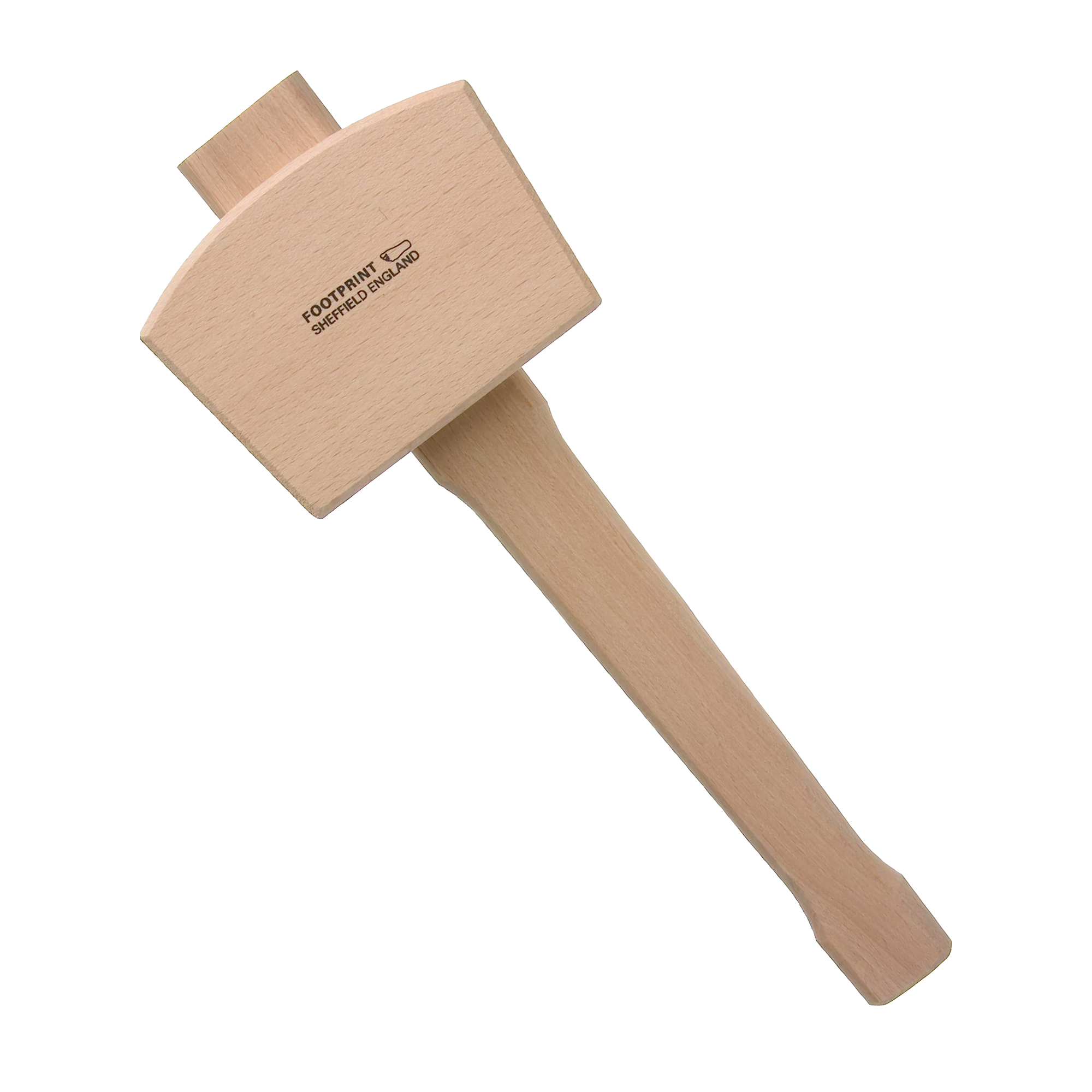Description
THIS PRUDUCT: 4 1/2″ (115mm), High Quality Beechwood Material, Ideal for use with chisels and all general joinery work.
IN GENERAL: A carpenter’s mallet, also known simply as a wooden mallet or a joiner’s mallet, is a traditional hand tool used by carpenters, woodworkers, and joiners for various woodworking tasks. It is characterized by its simple design, with a head made of wood and a wooden handle. Here’s a brief description of a carpenter’s mallet and some common uses:
Description:
- Head: The head of a carpenter’s mallet is typically made of hardwood, such as beech, hickory, or maple. It has a solid and often rectangular or cylindrical shape. The head is designed to be dense and heavy, providing the weight and impact needed for woodworking tasks.
- Handle: The handle of a carpenter’s mallet is an integral part of the head, as it is carved or formed from the same piece of wood. The handle is usually cylindrical and ergonomically shaped to fit comfortably in the user’s hand.
- Weight: Carpenter’s mallets come in various weights, with options ranging from a few ounces to several pounds. The weight of the mallet head affects the force it can deliver during striking.
Common Uses:
- Chisel Work: Carpenter’s mallets are frequently used in conjunction with chisels for cutting, carving, and shaping wood. The mallet is used to tap the chisel’s handle, driving the blade into the wood to create precise cuts and contours.
- Joinery: Woodworkers use carpenter’s mallets to join pieces of wood together, such as fitting dovetail joints, mortise and tenon joints, and other joinery connections. The mallet is used to tap and snugly fit the joint components together.
- Assembly: Carpenter’s mallets are used for assembling wooden components, such as knocking together joints in furniture pieces, securing wooden dowels, and seating wooden pegs.
- Splitting Wood: In some cases, carpenter’s mallets can be used for splitting smaller pieces of wood or persuading wooden wedges into tight-fitting joints.
- Tapping and Adjusting: Woodworkers use carpenter’s mallets to tap and adjust workpieces, ensuring that they are properly aligned, leveled, or seated.
- Light Hammering: When a softer touch is needed to prevent damaging the wood or workpiece, carpenter’s mallets can be used for light hammering tasks.
- Woodcarving: Carvers use smaller carpenter’s mallets for gentle tapping on carving tools such as gouges and chisels to remove wood material during carving and sculpting.
Carpenter’s mallets are essential hand tools in traditional woodworking and joinery. Their wooden construction ensures that they provide a softer, controlled impact when striking chisels and wooden components, reducing the risk of damaging the workpiece. They are known for their versatility and are valued for their ability to deliver precise and controlled force, making them ideal for various woodworking tasks that require finesse and accuracy.


